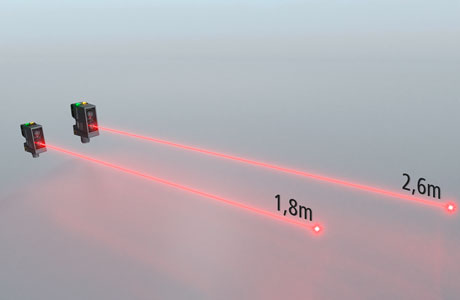Key Takeaway
The top photoelectric sensor manufacturers include Omron, Keyence, SICK, and Banner Engineering. These companies lead the global market with advanced technology and reliable solutions for industrial applications. They offer a wide range of sensors suited for various uses, from object detection to distance measurement.
However, choosing the right manufacturer depends on your specific needs. Factors like sensor type, environmental conditions, and budget can help narrow down the options. For example, Omron is known for its durability, while Keyence offers high precision.
Leading Global Photoelectric Sensor Companies
When it comes to photoelectric sensors, a few global brands dominate the market due to their innovation and reliability. Companies like Omron, Sick, Keyence, and Leuze are industry leaders that have shaped the landscape with cutting-edge technology. For instance, Omron is renowned for its versatile sensors that adapt to a range of industrial applications. Sick stands out for its smart sensors, which offer real-time diagnostics—a feature critical in predictive maintenance. Meanwhile, Keyence excels with high-precision sensors, perfect for industries that require pinpoint accuracy.
These companies have built their reputations by continuously pushing the boundaries of sensor technology. Understanding their unique strengths is key to making an informed decision when choosing a photoelectric sensor. Whether you’re looking for adaptability, smart diagnostics, or precision, these brands offer products that cater to various industrial needs. By leveraging their expertise, you’ll ensure your project benefits from the best sensors on the market.

How to Choose the Right Manufacturer for Your Application
Choosing the right manufacturer involves more than just selecting a well-known brand. Each project has unique demands, and the sensor must meet those requirements. For example, if your project operates in a dusty or wet environment, you’ll need sensors with robust resistance to these conditions. Durability becomes more important than other features in such cases. If speed is a priority, manufacturers that specialize in sensors with fast response times should be at the top of your list.
Another critical factor is the level of technical support provided. Some manufacturers, like Keyence, are known for their extensive post-purchase support, which can be crucial during setup or troubleshooting. This kind of assistance can save time and prevent costly delays in your operations. Therefore, it’s essential to assess your project’s unique needs before finalizing a manufacturer.
Comparing Features and Capabilities of Top Manufacturers
Each leading manufacturer offers unique features, and understanding these differences can help you make a more informed decision. For example, Omron provides sensors that are designed to perform exceptionally well in harsh environments, which makes them ideal for rugged applications. On the other hand, Sick is known for its smart sensors that come equipped with advanced diagnostics capabilities, which are vital for industries that prioritize predictive maintenance.
Keyence, another leader, offers some of the most precise sensors on the market, perfect for operations that require extreme accuracy. Leuze, meanwhile, focuses on ease of use, offering sensors that are easy to install and integrate into existing systems. By comparing these capabilities, you can tailor your selection based on the exact requirements of your project, ensuring optimal performance and long-term reliability.
Emerging Players in the Photoelectric Sensor Market
While the established brands dominate the photoelectric sensor market, several emerging players are gaining ground. Companies like Autonics and Banner Engineering have been making a name for themselves by offering cost-effective solutions that don’t compromise on quality. These companies are particularly popular among smaller and mid-sized operations that need flexibility without a hefty price tag.
Autonics, for instance, has developed sensors that cater to niche markets, offering specialized features at competitive prices. Banner Engineering focuses on innovation, providing new technology that addresses specific customer needs. Keeping an eye on these emerging players could give you access to innovative and budget-friendly solutions that perfectly suit your application, especially if you’re working in a more specialized industrial environment.
What to Consider When Selecting a Sensor from a Manufacturer
When selecting a sensor, it’s essential to consider more than just technical specifications. Start by evaluating the environment where the sensor will operate. If your application involves extreme conditions like high heat, dust, or moisture, you’ll need a sensor designed to withstand these challenges. This ensures long-term reliability and prevents costly downtime due to sensor failure. Manufacturers offering specialized sensors for these conditions should be at the top of your list.
Precision is another crucial factor. For high-speed production lines, even minor delays can cause significant losses in efficiency. A sensor that delivers fast, accurate responses is vital for maintaining productivity. Moreover, seamless integration with your existing systems should also be considered, as it can help reduce setup time and costs. Finally, don’t overlook post-purchase support—reliable service from the manufacturer can be invaluable in resolving technical issues quickly, ensuring smooth operation.
Conclusion
In conclusion, finding the right photoelectric sensor manufacturer depends on your specific requirements. Omron, Sick, Keyence, and Leuze are established brands that offer reliable, high-quality sensors with varying strengths. If you’re looking for innovative solutions on a budget, Autonics and Banner Engineering are emerging as strong contenders. Whether you need durability, speed, or precision, there’s a manufacturer out there to meet your industry’s unique needs.
By making informed choices, you’ll ensure that your automation systems are powered by the best sensors in the business, improving efficiency, safety, and productivity.
